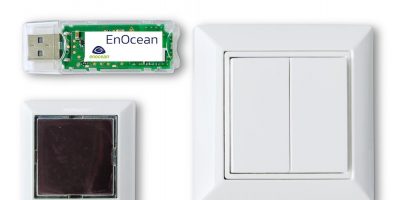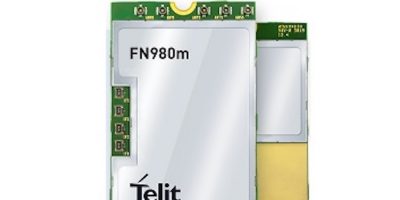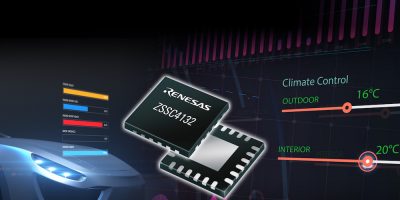An IoT starter kit developed by EnOcean simplified the integration of EnOcean wireless sensors with Aruba Wi-Fi access points. The two companies have partnered to facilitate the integration of IoT sensors into existing IT infrastructure and leveraging IT security mechanisms to protect IoT data and devices. The Eiska starter kit (Eisku in North America) includes an EnOcean EMSIx multisensor, an Easyfit wireless switch, an EnOcean USB stick, and demonstration software. All devices support the EnOcean radio standard (ISO/IEC 14543-3-10/11).
The starter kit is used with a separately purchased Aruba access point.
EnOcean USB sticks are available in both 868MHz (Europe) and 902MHz (USA/Canada) versions, and are compatible with any Aruba Wi-Fi 5 and Wi-Fi 6 access point with a USB port that is running ArubaOS 8.7 software. Aruba’s Zero-Trust Network automatically establishes a secure data connection between EnOcean-compatible devices and the IoT application. There is therefore no need for gateways, which reduces costs.
“Customers only need to attach the included sensor and switch where they want to collect data and stick the USB device into their Aruba access point,” explains Troy Davis, vice president of sales North America west region. The USB stick “opens up the world to 5,000 products [based on EnOcean’s energy harvesting technology] from members of the EnOcean Alliance,” he adds.
EnOcean’s energy harvesting sensors generate energy from light, movement or temperature, eliminating the need for batteries or power wiring. The EMSIx multi-sensor combines temperature, humidity, light level, acceleration and magnet contact sensors, making it suitable for a variety of IoT and smart building applications. An integrated near field communication (NFC) interface enables the multi-sensor to be configured and commissioned quickly and easily. The wireless Easyfit energy harvesting switch can be placed anywhere lighting control is needed, including difficult to wire, architecturally sensitive areas, such as glass, marble, reinforced concrete and room dividers.
The European Eiska starter kit includes an EnOcean USB 300, a solar-powered EMSIA multi-sensor and an Easyfit EWSDA double rocker switch. The Eisku starter kit includes an EnOcean USB 500U, the solar-powered EMSIU multi-sensor, an Easyfit EDRPU double rocker switch, an ETHSU temperature and humidity sensor, and an EMCSU magnet contact sensor.
Demonstration software includes dashboards to show control activity in real-time. The IoT starter kits are available now in Europe from Arrow Electronics, and in North America from Ingram Micro.







